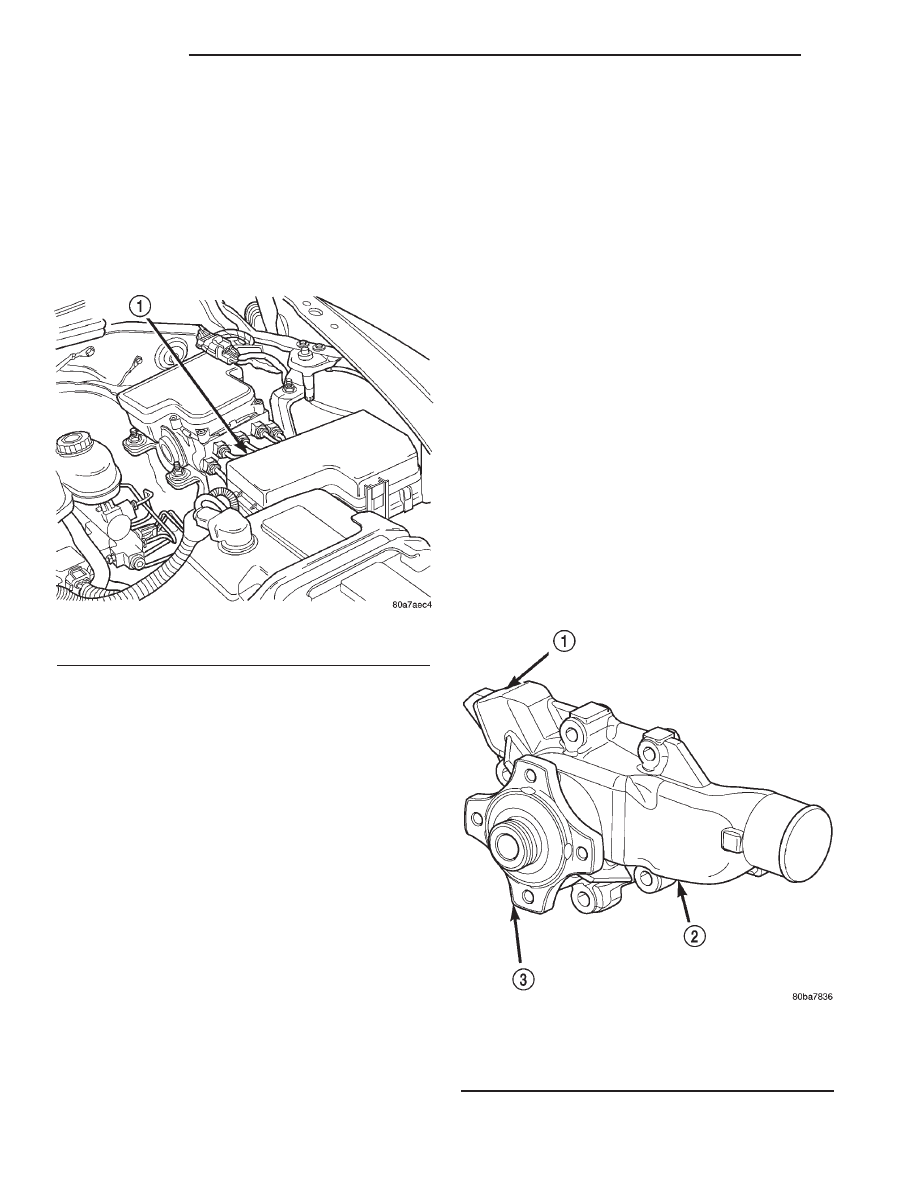Dodge Dakota (R1). Manual - part 260

• If no problems are detected, install the DRB
(refer to the appropriate Powertrain Diagnostic Pro-
cedures manual for DRB scan tool operating instruc-
tions) and start the engine. Clip a 12V test light to
the battery positive terminal and probe circuit C27
(relay terminal 85). When the engine temperature
reaches 110° C (230° F), or A/C is requested, the test
light should light. If not, check circuit C27 for open.
• If no problems are detected at this point, replace
the cooling fan relay.
RADIATOR FAN RELAY
DESCRIPTION
The radiator cooling fan relay is a 5–pin, solenoid
type, mini-relay. It is located in the Power Distribu-
tion Center (PDC). Refer to label on PDC cover for
relay location.
OPERATION
The electric radiator cooling fan is controlled by
the Powertrain Control Module (PCM) through the
radiator cooling fan relay. The PCM will activate the
relay after receiving inputs from the engine coolant
temperature sensor and/or an air conditioning on/off
signal. Not Equipped With A/C: The relay is ener-
gized when coolant temperature is above approxi-
mately 103°C (217°F). It will then de-energize when
coolant temperature drops to approximately 98°C
(208°F). Equipped With A/C: In addition to using
coolant temperatures to control cooling fan operation,
the cooling fan will also be engaged when the air con-
ditioning system has been activated. Refer to 24 -
HEATING & AIR CONDITIONING for additional
information.
WATER PUMP - 2.5L
DESCRIPTION
CAUTION: All 2.5L 4-cylinder engines are equipped
with a reverse (counterclockwise) rotating water
pump. REVERSE is stamped or imprinted on the
cover of the viscous fan drive and inner side of the
fan. The letter R is stamped into the back of the
water pump impeller. Engines from previous model
years, depending upon application, may have been
equipped with a forward (clockwise) rotating water
pump. Installation of the wrong water pump or vis-
cous fan drive will cause engine over heating.
This aluminum water pump (Fig. 40) is the heart
of the cooling system. The water pump is located at
the front of the cylinder block, above the timing
chain cover
The water pump impeller is pressed onto the rear
of a shaft that rotates in bearings pressed into the
housing. The housing has two small holes to allow
seepage to escape. The water pump seals are lubri-
cated by the antifreeze in the coolant mixture. No
additional lubrication is necessary.
Fig. 39 Power Distribution Center (PDC)
1 - POWER DISTRIBUTION CENTER (PDC)
Fig. 40 Water Pump
1 - HEATER HOSE FITTING BORE
2 - WATER PUMP
3 - WATER PUMP HUB
7 - 52
ENGINE
AN
RADIATOR FAN MOTOR (Continued)